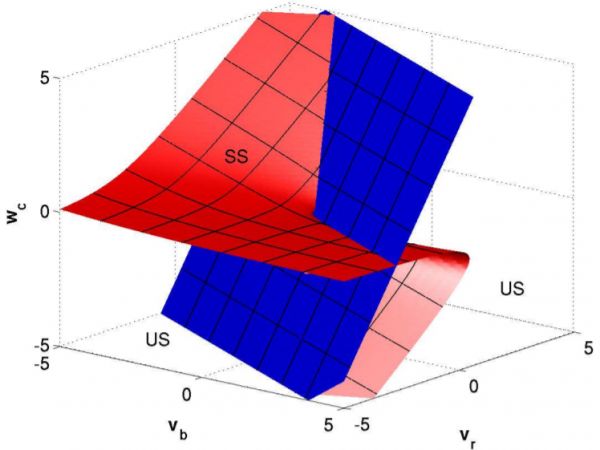zumsande2011general
General analysis of mathematical models for bone remodeling
Martin Zumsande, Dirk Stiefs, Stefan Siegmund and Thilo Gross
Bone 48, 910-917, 2011
Bone remodeling is regulated by pathways controlling the interplay of osteoblasts and osteoclasts. In this work, we apply the method of generalized modelling to systematically analyse a large class of models of bone remodeling. Our analysis shows that osteoblast precursors can play an important role in the regulation of bone remodeling. Further, we find that the parameter regime most likely realized in nature lies very close to bifurcation lines, marking qualitative changes in the dynamics. Although proximity to a bifurcation facilitates adaptive responses to changing external conditions, it entails the danger of losing dynamical stability. Some evidence implicates such dynamical transitions as a potential mechanism leading to forms of Paget's disease.

Figure 1: Bifurcation diagram of the extended model, depending on the effects of RANKL/OPG (\(v_b, v_r\)) and the autocrine effects of osteoblast decay (\(w_c\)). The stable parameter regime (SS), which is located in the upper front part of the diagram, can be lost via a Hopf bifurcation (red) or a saddle-node bifurcation (blue).